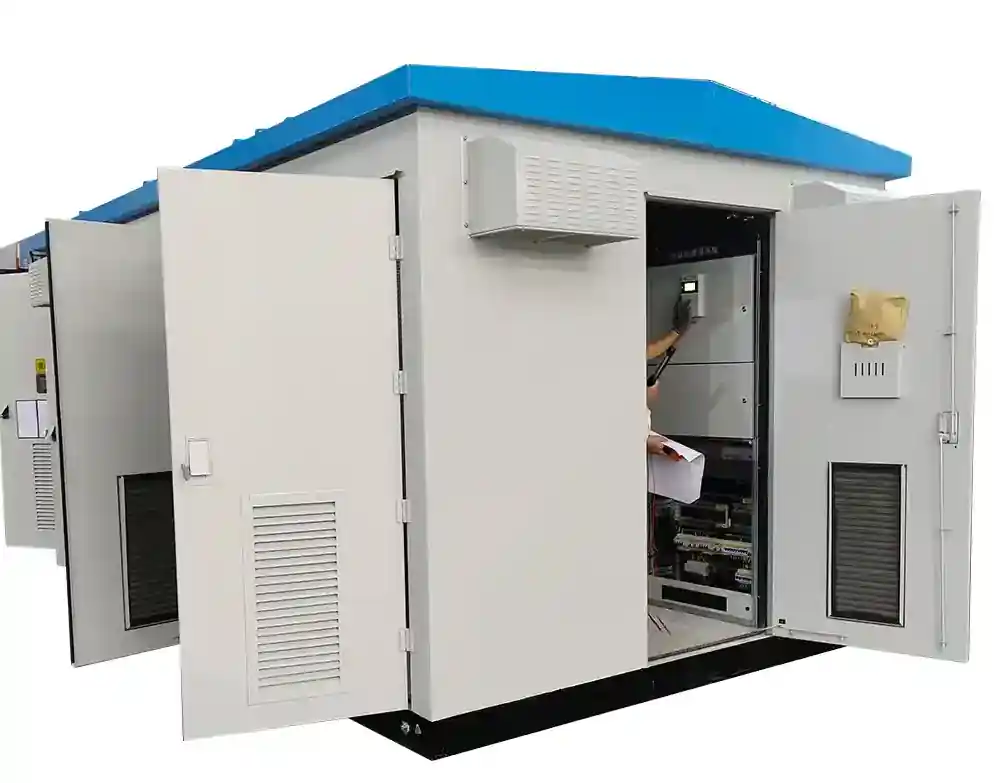Introduction
A compact substation, also known as a unitized or packaged substation, is an all-in-one solution that integrates a transformer, medium-voltage (MV) switchgear, and low-voltage (LV) panel into a single enclosure. It provides efficient and reliable power transformation from MV to LV, often used in industrial zones, real estate developments, and renewable energy systems.
One of the most frequently asked questions from electrical contractors and project developers is:
“What is the price of a compact substation?”
The answer is not straightforward, as prices vary depending on technical specifications, regional standards, materials, and customization options. This article explores the major factors influencing compact substation pricing and provides realistic cost ranges for different configurations.

What Influences Compact Substation Price?
1. Transformer Capacity
The rated power of the transformer (e.g., 250 kVA, 500 kVA, 1000 kVA) is a primary cost driver. Larger capacity units require more materials, cooling systems, and protection devices, leading to higher prices.
2. Voltage Rating
Substations designed for 11 kV, 22 kV, or 33 kV input voltages will differ in price due to insulation, switchgear ratings, and safety requirements. Higher voltage equipment generally demands higher costs.
3. Transformer Type
- Oil-immersed transformers are usually more cost-effective and preferred for outdoor applications.
- Dry-type transformers offer flame-retardant and indoor-safe operation but come at a premium.
4. Enclosure Material
- Mild steel with powder coating (standard)
- Hot-dip galvanized steel (better for corrosion protection)
- Stainless steel (ideal for coastal or harsh environments)
Each material grade influences the final compact substation price.
5. Switchgear Configuration
Whether the substation uses load break switches (LBS), ring main units (RMUs), or vacuum circuit breakers (VCBs) affects pricing. Additional protection relays, CT/PT sets, and metering increase the cost.
6. Customization and Add-ons
- Remote monitoring (SCADA or IoT modules)
- Arc protection designs
- Solar-ready LV panels
- Special enclosure ratings (IP65, arc-proof, flameproof) All these optional features add to the base price.
Average Compact Substation Price by Capacity
| Substation Rating | Estimated Price Range (USD) | Notes |
|---|---|---|
| 250 kVA | $6,000 – $9,000 | Basic oil-immersed, LBS, IP54 |
| 500 kVA | $9,000 – $14,000 | Standard RMU, MCCB, painted steel |
| 1000 kVA | $14,000 – $22,000 | With VCB, ACB, metering panel |
| 1600 kVA | $20,000 – $30,000 | Higher-end, with SCADA |
| 2000 kVA+ | $30,000 and up | Custom EPC builds or GIS versions |
💡 Prices vary by region, local regulations, and manufacturer. Costs may also exclude freight, foundation, or site installation.
Compact Substation Price in Key Markets
India
- Prices are generally competitive.
- A 500 kVA substation may cost between ₹7.5 lakh to ₹12 lakh.
- BIS, CEA, and DISCOM specs may affect final pricing.
South Africa
- Eskom-compliant units for rural electrification start around ZAR 180,000.
- Coastal-ready stainless steel versions cost more due to environmental factors.
Malaysia (TNB Standard)
- Must comply with TNB distribution requirements.
- 11/0.433 kV compact substation typically ranges from RM 40,000 to RM 80,000.
Middle East & GCC
- High ambient temperature designs and IEC standards push pricing higher.
- Prices can be 15–30% above global average.
Are Compact Substations Cost-Effective?
Absolutely. While the upfront cost may appear higher than traditional substations, compact units offer:
- Reduced civil work (no separate building required)
- Lower installation time and labor
- Smaller footprint = less land cost
- Pre-tested, reducing commissioning delays
- Safer and more aesthetic for public installations
Over the project lifecycle, these savings often justify the higher initial cost.
Cost-Saving Tips
- Bundle multiple units in one order to reduce manufacturing and freight cost
- Use standard configurations where possible to avoid redesign charges
- Plan for future load expansion to avoid premature upgrades
- Compare multiple certified suppliers for competitive bidding
- Ask for ex-works vs. delivered price breakdown to optimize logistics
Frequently Asked Questions
Q1: Does the price include installation?
Usually not. Most manufacturers provide the ex-works or FOB price. Site installation is handled by local contractors.
Q2: Can we get financing for compact substations?
Yes, especially for government or solar projects. Some EPCs offer leasing or deferred payment options.
Q3: What’s the lead time for delivery?
Standard units take 3–6 weeks. Custom-built systems may require 8–10 weeks or more.
Q4: Are there price differences between oil and dry transformers?
Yes. Dry-type transformers can cost 20–35% more than equivalent oil-immersed units.